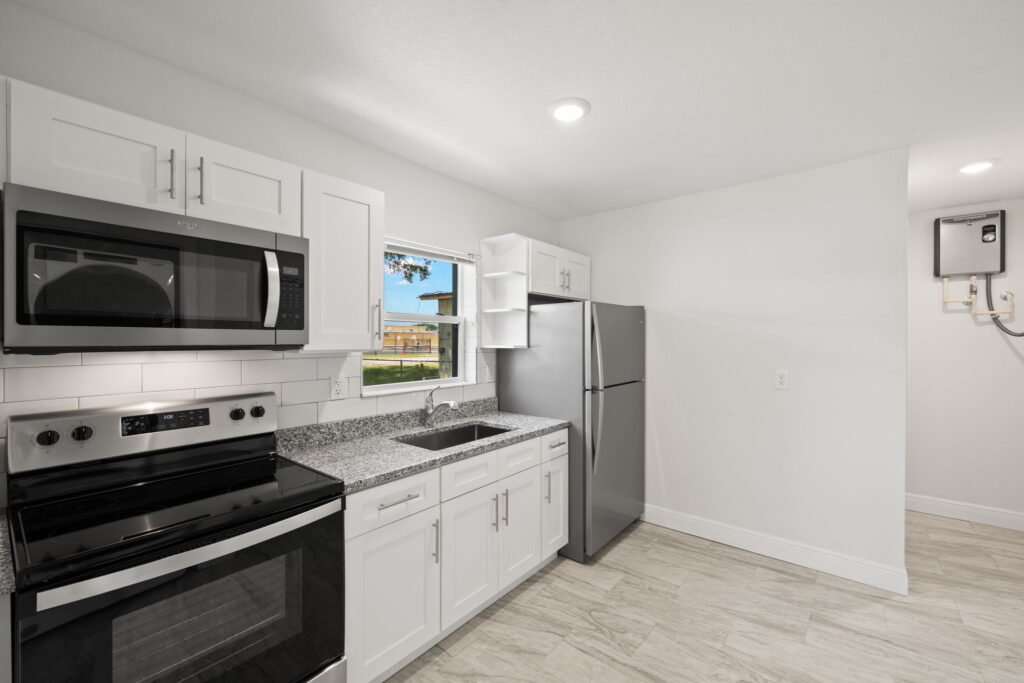
10 Essential Home Repairs Every New Homeowner Should Know
Becoming a new homeowner is an exciting milestone, but it also comes with a set of responsibilities, particularly when it comes to maintaining your home. While some issues require professional help, many common home repairs are simple enough to handle on your own. Knowing how to tackle these tasks can save you time, money, and stress. Here are ten essential home repairs every new homeowner should be familiar with.
1. Fixing a Leaky Faucet
A leaky faucet isn’t just annoying; it can also waste a significant amount of water and increase your utility bills. Fortunately, fixing a leaky faucet is a relatively straightforward task that most homeowners can handle. Typically, the problem is caused by a worn-out washer or O-ring, which can be easily replaced. Make sure to turn off the water supply before starting, and follow the manufacturer’s instructions if you need to disassemble the faucet.
2. Unclogging Drains
Clogged drains are a common issue in bathrooms and kitchens. Hair, soap scum, grease, and food particles can accumulate over time, causing water to drain slowly or not at all. To tackle a clogged drain, start by using a plunger. If that doesn’t work, a drain snake or a mixture of baking soda and vinegar can often do the trick. For stubborn clogs, you might need to remove and clean the P-trap under the sink.
3. Repairing Drywall Holes
Whether it’s from moving furniture or hanging pictures, small holes in your drywall are almost inevitable. Luckily, repairing drywall is a simple process. For small holes, you can use spackle or a ready-made patch kit. Larger holes may require a patch of drywall, joint compound, and sanding to smooth the surface. Once the repair is complete, a fresh coat of paint will make your wall look as good as new.
4. Replacing a Faulty Light Switch
A malfunctioning light switch can be both inconvenient and dangerous. Replacing a faulty switch is a quick fix that only requires a few basic tools. Before you begin, ensure that the power to the switch is turned off at the breaker box. After that, it’s just a matter of removing the faceplate, disconnecting the old switch, and wiring the new one in its place. If you’re unsure about working with electricity, it’s best to consult a professional.
5. Sealing Gaps and Cracks
Gaps and cracks around windows, doors, and baseboards can lead to drafts, higher energy bills, and even pest infestations. Sealing these gaps with caulk is an easy and inexpensive way to improve your home’s energy efficiency and comfort. Silicone caulk is ideal for areas exposed to moisture, while acrylic caulk works well for general-purpose sealing. Applying caulk is simple: just clean the area, cut the tip of the caulk tube, and apply a smooth bead along the gap.
6. Maintaining Gutters
Gutters play a crucial role in directing water away from your home’s foundation, but they can easily become clogged with leaves, twigs, and debris. Regularly cleaning your gutters is essential to prevent water damage and maintain the structural integrity of your home. Use a sturdy ladder and gloves to remove debris, and flush the gutters with a hose to ensure proper water flow. Consider installing gutter guards to reduce the frequency of cleaning.
7. Repairing a Running Toilet
A toilet that won’t stop running can waste a significant amount of water and drive up your utility bills. The problem is usually caused by a faulty flapper valve or fill valve inside the tank. Replacing these components is a simple and inexpensive repair that most homeowners can handle. If you’re unsure which part is causing the issue, there are plenty of online tutorials that can guide you through the troubleshooting process.
8. Replacing Air Filters
Maintaining good indoor air quality is important for your health and comfort, and regularly replacing your HVAC system’s air filters is a key part of that. Dirty or clogged filters can reduce your system’s efficiency, leading to higher energy costs and potential damage to the equipment. Depending on your system and the type of filter, it’s recommended to replace filters every 1-3 months. This is a quick and easy task that can make a big difference in your home’s air quality.
9. Fixing Squeaky Floors
Squeaky floors can be a nuisance, especially in the middle of the night. The squeaking is usually caused by loose floorboards or nails that have become dislodged over time. To fix a squeaky floor, you can try applying a powdered lubricant like talcum powder or graphite between the floorboards. If that doesn’t work, you may need to drive additional nails or screws into the floor joists to secure the loose boards.
10. Understanding Your Circuit Breaker
Your home’s circuit breaker is the first line of defense against electrical overloads and short circuits. It’s essential to know how to reset a tripped breaker and understand the basics of how your electrical panel works. When a breaker trips, locate the breaker box, identify the tripped switch (it will usually be in the middle position), and flip it fully to the “off” position before turning it back to “on.” If a breaker continues to trip frequently, it could indicate a more serious electrical issue that requires professional attention.
Conclusion
Owning a home comes with its share of maintenance tasks, but by mastering these ten essential repairs, you can handle many common issues that arise. Not only will this knowledge save you money on professional services, but it will also give you a sense of pride and confidence in maintaining your home. However, remember that safety always comes first—when in doubt, don’t hesitate to call in a professional. With the right tools and a bit of know-how, you’ll be well-equipped to keep your home in great shape for years to come.
